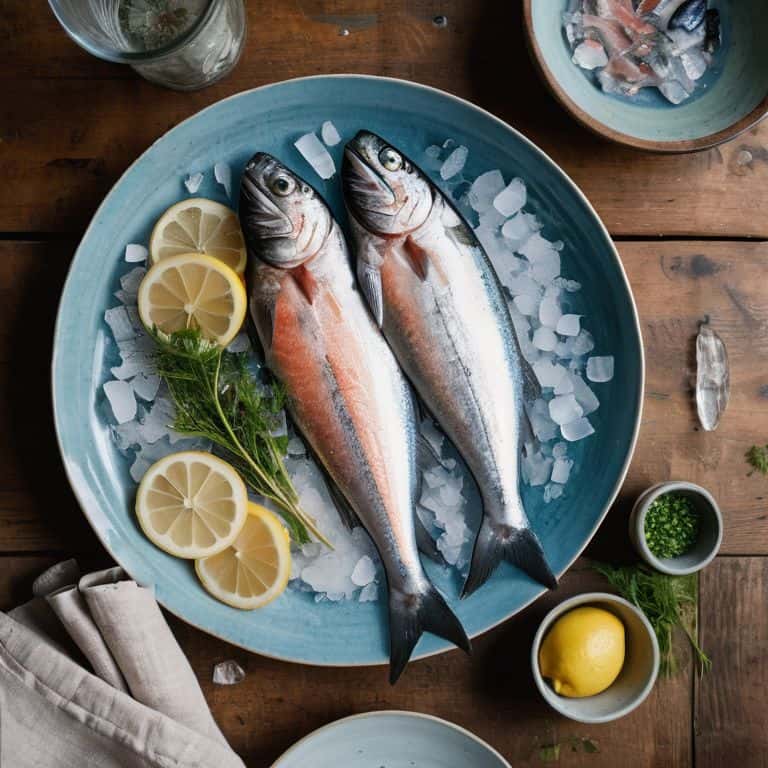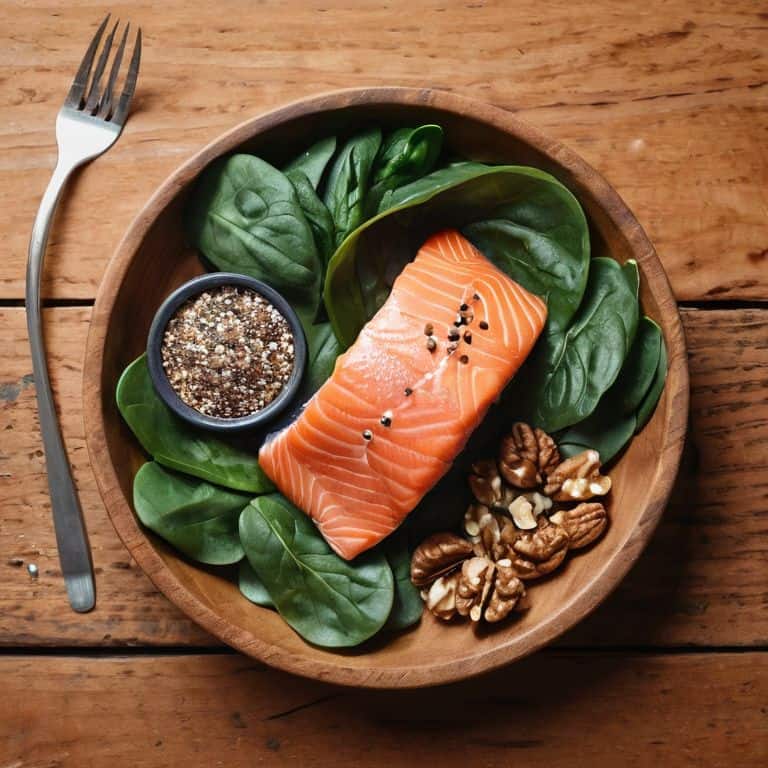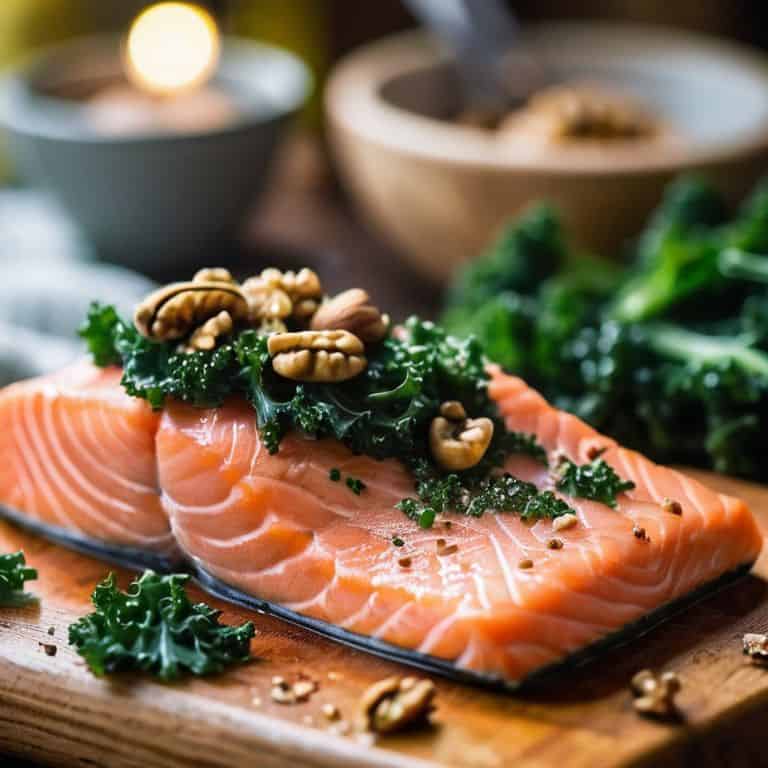I still remember the first time I encountered the term what are omega-3 fatty acids in my nutrition studies. It was like a lightbulb moment – I realized that these essential fatty acids were not just some obscure nutrient, but a _game-changer_ for our overall health and wellbeing. As a nutritionist, I’ve seen how omega-3s can make a real difference in people’s lives, from reducing inflammation to supporting heart health. But despite their importance, I’ve noticed that many people are still confused about what are omega-3 fatty acids and how they can incorporate them into their diet.
As someone who’s passionate about making healthy eating _accessible and enjoyable_, I want to cut through the noise and give you the lowdown on omega-3s. In this article, I’ll share my expertise and personal experience to answer your burning questions about what are omega-3 fatty acids. I’ll give you the _straight scoop_ on what they are, where to find them, and how to make them a delicious part of your daily routine. My goal is to empower you with the knowledge and inspiration you need to nourish your body and satisfy your cravings, without feeling overwhelmed or deprived. So, let’s dive in and explore the wonderful world of omega-3s together!
Table of Contents
Unlocking Omega 3 Secrets

As I explore the world of omega-3s, I’m constantly amazed by their profound impact on our overall well-being. One of the most significant concerns is an omega-3 fatty acid deficiency, which can lead to symptoms like fatigue, dry skin, and even depression. It’s essential to include food sources high in omega-3s in our diet to avoid these issues.
I’ve found that omega-3 benefits for heart health are particularly noteworthy, as they help reduce inflammation and improve blood lipid profiles. The ideal omega-6 to omega-3 ratio is also crucial, as an imbalance can lead to chronic diseases. By focusing on whole, nutrient-dense foods, we can achieve a better balance and support our overall health.
In my kitchen, I love experimenting with plant-based omega-3 alternatives like flaxseeds, chia seeds, and walnuts. These ingredients not only add a boost of omega-3s to our meals but also provide a delicious and satisfying crunch. By incorporating these foods into our diet, we can experience the omega-3 effects on brain function, from improved focus to enhanced mood, and truly nourish our bodies and minds.
Heart Health Benefits of Omega 3s
When it comes to our hearts, omega-3s are truly the heroes we need. They help to lower triglycerides, which can reduce the risk of heart disease. By incorporating omega-3 rich foods into our diets, we can take a significant step towards a healthier heart.
The anti-inflammatory effects of omega-3s also play a crucial role in maintaining heart health. By reducing inflammation in the body, omega-3s can help to prevent the buildup of plaque in our arteries, which can lead to heart attacks and strokes. This is just one of the many reasons I love recommending omega-3 rich foods to my clients.
Omega 3 Deficiency Symptoms Revealed
When our bodies don’t get enough omega-3s, we can start to feel the effects. Fatigue can set in, making it hard to tackle our daily routines, let alone hit the trails for a run. I’ve seen it in my clients, and I’ve felt it myself – it’s like our energy levels are drained, and we can’t seem to get our mojo back.
As the deficiency progresses, we might start to notice some other issues, like brain fog or trouble concentrating. It’s not just about feeling tired; it’s about feeling like we’re not functioning at our best. By recognizing these symptoms, we can take the first step towards nourishing our bodies and getting back to our vibrant selves.
What Are Omega 3 Fatty Acids

As a nutritionist, I’m excited to share my knowledge about omega-3 fatty acids and their role in our overall health. These essential fatty acids are crucial for various bodily functions, including heart health and brain function. I’ve seen firsthand how a diet rich in omega-3s can make a significant difference in people’s lives. When it comes to food sources high in omega-3, I always recommend incorporating fatty fish like salmon, sardines, and mackerel into your meals.
A common issue I’ve encountered in my practice is an omega-3 fatty acid deficiency, which can lead to symptoms like fatigue, dry skin, and mood swings. It’s essential to maintain a balanced omega-6 to omega-3 ratio to avoid these issues. While it can be challenging to get enough omega-3s from food sources alone, I always encourage my clients to explore plant-based omega-3 alternatives like flaxseeds, chia seeds, and walnuts.
By understanding the importance of omega-3s and making informed dietary choices, we can harness their omega-3 benefits for heart health and overall well-being. As someone who’s passionate about trail running and visiting farmers’ markets, I’m always on the lookout for fresh, seasonal ingredients to create delicious and nutritious meals that showcase the beauty of omega-3 rich foods. Whether you’re a foodie or just starting to explore the world of healthy eating, I’m here to guide you on this journey and make it a joyful experience.
Balancing Omega 6 to Omega 3 Ratio
To get the most out of omega-3s, it’s essential to consider the delicate balance between omega-6 and omega-3 fatty acids in our diet. Achieving harmony between these two types of fatty acids is crucial, as an imbalance can lead to inflammation and other health issues. By being mindful of our omega-6 intake, we can create a healthier ratio and allow the omega-3s to work their magic.
A healthy balance is key to unlocking the full potential of omega-3s. By focusing on whole, nutrient-dense foods and being aware of our overall fatty acid intake, we can promote a balanced ratio and support our overall well-being.
Food Sources High in Omega 3 Bliss
When it comes to incorporating omega-3s into our diets, I get super excited about all the delicious options available. Fatty fish like salmon, sardines, and mackerel are some of the richest sources, but we can also find omega-3s in flaxseeds, chia seeds, and walnuts.
Incorporating these foods into our meals can be easy and fun, and I love experimenting with new recipes that feature omega-3 rich ingredients as the star of the show. Whether it’s a hearty salmon salad or a crunchy walnut snack, there are countless ways to make omega-3s a part of our daily nourishment.
5 Essential Tips to Unlock the Power of Omega-3s
- Dive into Fatty Fish: Incorporate fatty fish like salmon, sardines, and mackerel into your meals to boost your omega-3 intake
- Explore Plant-Based Options: Don’t be afraid to get creative with plant-based sources like chia seeds, flaxseeds, and walnuts to add omega-3s to your diet
- Supplement with Care: If you’re considering omega-3 supplements, consult with a healthcare professional to ensure you’re getting the right amount for your needs
- Mind Your Ratio: Balance your omega-6 to omega-3 ratio by limiting processed foods and emphasizing whole, nutrient-dense foods in your diet
- Get Creative with Omega-3 Rich Foods: Experiment with new recipes that feature omega-3 rich foods, such as grilled salmon tacos or chia seed pudding, to make healthy eating a delight
Nourishing Your Way to Omega-3 Bliss: 3 Key Takeaways
I’ve learned that incorporating omega-3 rich foods into my diet can be a total game-changer for my overall health and happiness, from reducing inflammation to boosting heart health
By understanding the importance of balancing my omega-6 to omega-3 ratio, I can make informed choices about the foods I eat and ensure I’m giving my body the best chance to thrive
From fatty fish to nuts and seeds, there are so many delicious ways to get enough omega-3s in my diet – and with a little creativity, I can make healthy eating a joyful and sustainable part of my lifestyle
The Omega-3 Revelation
Omega-3s are not just a nutrient, they’re a gateway to a happier, healthier you – and the best part is, you can find them in the most delicious, whole foods that will make your taste buds and your body sing!
Laura Paskal
Embracing the Power of Omega-3s

As we’ve explored the wonderful world of omega-3 fatty acids, it’s clear that these nutrients play a vital role in our overall health and wellbeing. From unlocking omega-3 secrets to understanding the importance of balancing our omega-6 to omega-3 ratio, we’ve discovered that incorporating these fatty acids into our diets can have a significant impact on our heart health, brain function, and even our mood. By focusing on whole, nutrient-dense foods and being mindful of our omega-3 intake, we can take a proactive approach to supporting our bodies and reducing the risk of chronic diseases.
So, what’s the takeaway from our journey into the world of omega-3s? It’s that nourishing our bodies doesn’t have to be a chore – it can be a delicious and enjoyable experience. By embracing the power of omega-3s and making informed choices about the foods we eat, we can cultivate a healthier, happier relationship with food and our bodies. Remember, it’s all about adding joy and nutrients to our lives, one meal at a time.
Frequently Asked Questions
How can I ensure I'm getting enough omega-3s in my daily diet?
To boost your omega-3 intake, I recommend incorporating fatty fish like salmon, sardines, and mackerel into your meals 2-3 times a week. You can also try adding walnuts, chia seeds, and flaxseeds to your oatmeal or yogurt for a nutrient-packed snack – it’s all about making delicious choices that nourish your body!
What are the differences between the three main types of omega-3 fatty acids: ALA, EPA, and DHA?
Let’s break it down – we’ve got three Rockstar omega-3s: ALA, EPA, and DHA. ALA is like the plant-based pioneer, found in nuts and seeds, while EPA and DHA are the dynamic duo from seafood, with EPA helping reduce inflammation and DHA supporting brain health. Each plays a unique role, and I love how they work together in harmony!
Can I get enough omega-3s from plant-based sources, or do I need to consume fish and seafood to reap the benefits?
While it’s possible to get omega-3s from plant-based sources like flaxseeds, chia seeds, and walnuts, the benefits are slightly different. These sources contain ALA, which needs to be converted to EPA and DHA in the body. If you’re plant-based, consider algae oil supplements or fortified foods to get those direct benefits, and don’t worry, I’ve got delicious recipes to make it all easy and fun!
